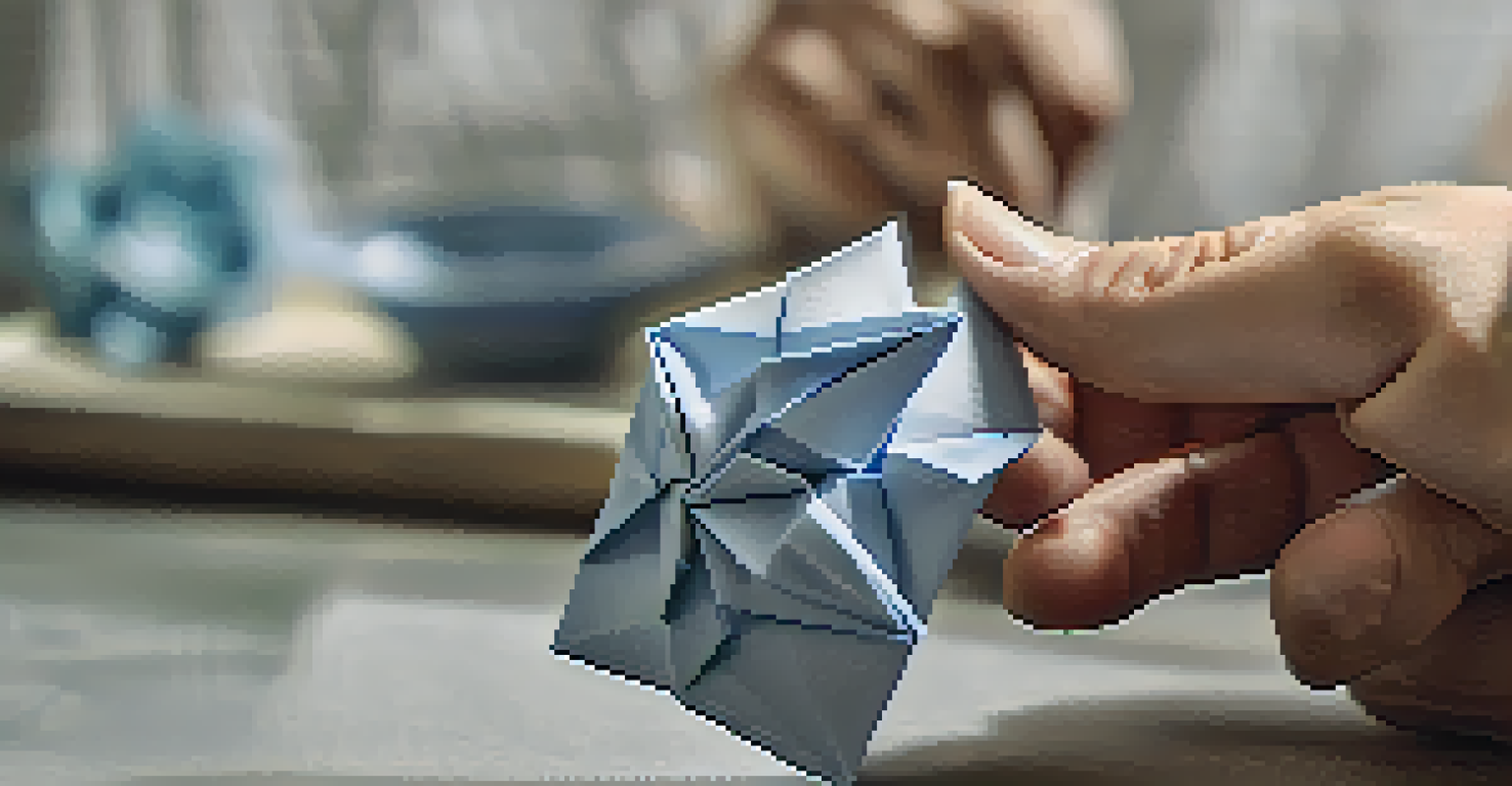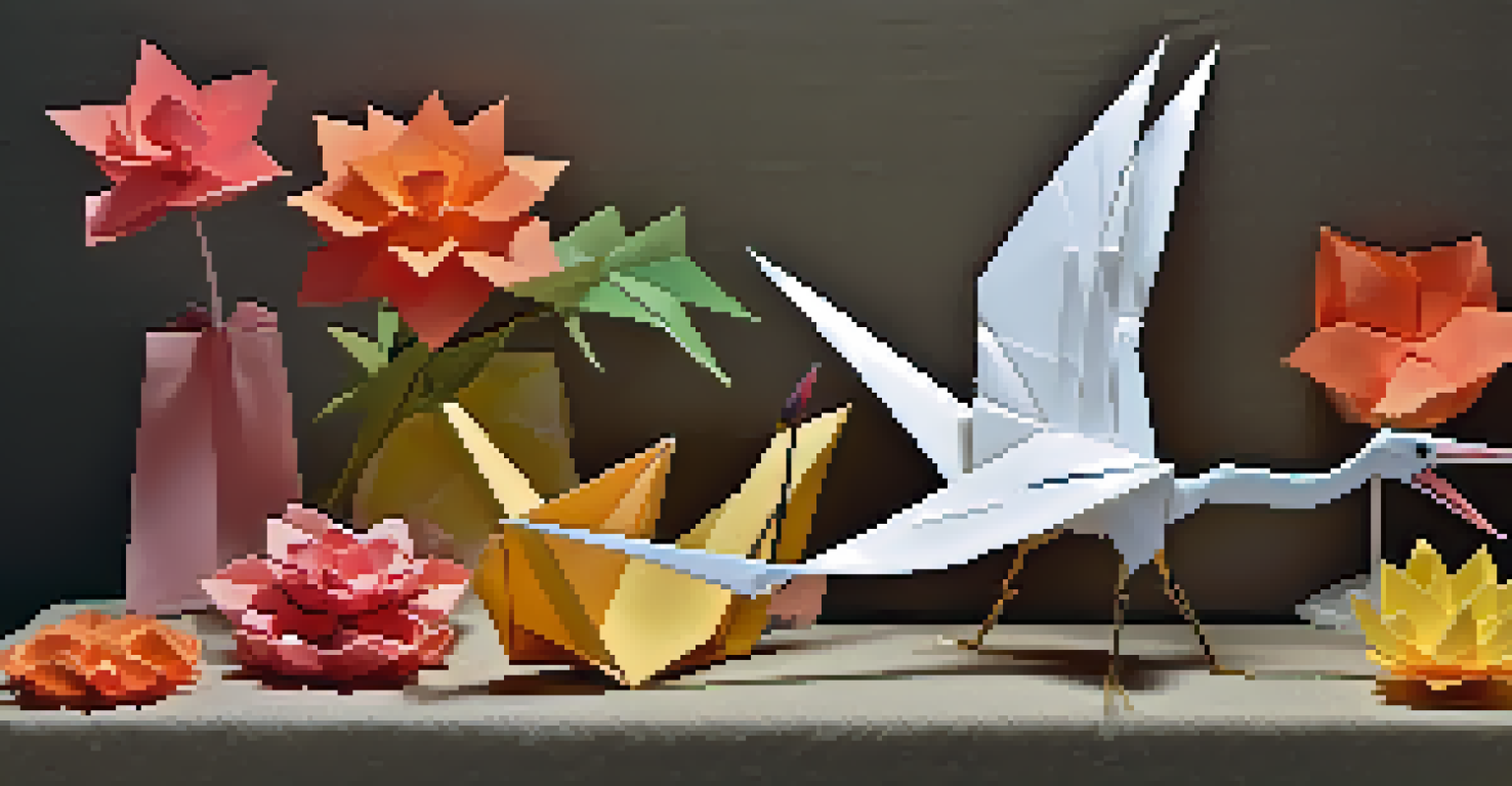Origami Folding Diagrams: How to Read and Understand Them

What Are Origami Folding Diagrams and Their Purpose?
Origami folding diagrams serve as visual instructions for creating paper models. They break down complex shapes into simple steps, making it easier for beginners and experienced folders alike. Think of these diagrams as a roadmap, guiding you through each fold and crease with clarity.
Origami is the art of paper folding, which has evolved into a modern art form. It is a way to express creativity and imagination through the simple act of folding paper.
The diagrams typically include symbols representing folds, such as valley folds and mountain folds. Each symbol plays a crucial role in achieving the final design. By understanding these symbols, you can unlock the full potential of origami and create stunning pieces of art.
Whether you're folding a simple crane or an intricate dragon, a good diagram will enhance your origami experience. It not only simplifies the process but also makes it more enjoyable, as you can see your creation come to life with each fold.
Understanding Basic Origami Symbols and Notations
To effectively read origami diagrams, it’s essential to familiarize yourself with the basic symbols used. For instance, a dashed line indicates a valley fold, while a dotted line signifies a mountain fold. These notations provide a clear visual guide to the type of fold required at each step.

Additionally, arrows often indicate the direction of folds, which can sometimes be overlooked. Pay close attention to these details, as they are crucial for the accuracy of your final piece. Ignoring them could lead to confusion and frustration during the folding process.
Origami Diagrams Simplify Folding
Origami folding diagrams serve as visual instructions, breaking down complex shapes into manageable steps for all skill levels.
As you gain experience, these symbols will become second nature. This knowledge allows you to approach more complex designs with confidence, making your origami journey even more rewarding.
Following the Sequence: Step-by-Step Instructions
Origami diagrams are typically laid out in a sequential manner, guiding you through the process step-by-step. Each step is usually numbered or arranged in a logical progression, making it easy to follow. Always start from the first step and work your way through to the end; skipping steps can lead to a jumble of paper.
Mistakes are a fact of life. It is the response to the error that counts.
As you follow the instructions, take your time with each fold. Rushing can result in crumpled paper or inaccuracies in your model. If you find yourself stuck, don't hesitate to revisit the previous steps; sometimes, a small adjustment can make a significant difference.
Practicing patience and precision is key in origami. The more you fold, the more comfortable you'll become with the sequence, ultimately leading to better results and greater satisfaction when completing your models.
Common Mistakes to Avoid When Reading Diagrams
Even seasoned folders can make mistakes when interpreting diagrams. One common error is misreading the symbols, which can lead to incorrect folds. Always double-check the symbols before you begin folding; a small oversight can result in a significant deviation from the desired model.
Another mistake is not paying attention to the orientation of the paper. Diagrams often assume a specific positioning; folding the paper upside down can lead to confusion. Ensure you're starting with the correct side facing up to align with the instructions.
Key Symbols Enhance Understanding
Familiarity with basic origami symbols, such as valley and mountain folds, is essential for accurately following diagrams.
Lastly, don’t underestimate the importance of paper quality. Using the wrong type or thickness can affect how well your folds hold. Selecting the appropriate paper will enhance your overall experience and the quality of your final piece.
The Importance of Practice in Mastering Origami
Like any skill, mastering origami requires consistent practice. The more you fold, the more familiar you'll become with different diagrams and techniques. Start with simple models to build your confidence before moving on to more intricate designs.
Practicing regularly will also help you develop a better understanding of the folds and their purpose. Over time, you'll find yourself anticipating the next step in a diagram, allowing you to tackle more complex creations with ease.
Remember, every expert was once a beginner. Embrace the learning process, and don't be discouraged by mistakes; they are part of your growth as an origami artist.
Finding Quality Origami Diagrams Online and Offline
With the rise of digital resources, finding quality origami diagrams is easier than ever. Websites, blogs, and social media platforms offer a plethora of designs suitable for all skill levels. Be sure to check for user reviews or ratings to ensure you're choosing reliable diagrams.
Books on origami are also a fantastic resource, often providing detailed instructions and beautiful illustrations. Visiting your local library or bookstore can uncover hidden gems that you might not find online. Plus, having a physical book can be a refreshing change from screen time.
Practice Leads to Mastery
Consistent practice is crucial in mastering origami, allowing folders to gain confidence and tackle more intricate designs.
Don’t forget about the origami community! Joining local clubs or online forums can provide access to shared diagrams and tips from fellow enthusiasts. Engaging with others can inspire new ideas and foster your love for this intricate art form.
Tips for Enhancing Your Origami Skills Over Time
To enhance your origami skills, consider setting specific goals for yourself. Whether it’s mastering a particular technique or completing a challenging model, having clear objectives can keep you motivated and focused. Documenting your progress can also provide a sense of accomplishment.
Experimenting with different types of paper can also elevate your creations. Various weights and textures can produce unique results, allowing you to explore new dimensions in your work. Don't be afraid to try unconventional materials like foil or recycled paper for a creative twist.

Lastly, always keep the spirit of fun and creativity alive. Origami should be an enjoyable pastime, so allow yourself the freedom to explore and make mistakes. The joy of watching a simple piece of paper transform into art is what makes origami truly special.